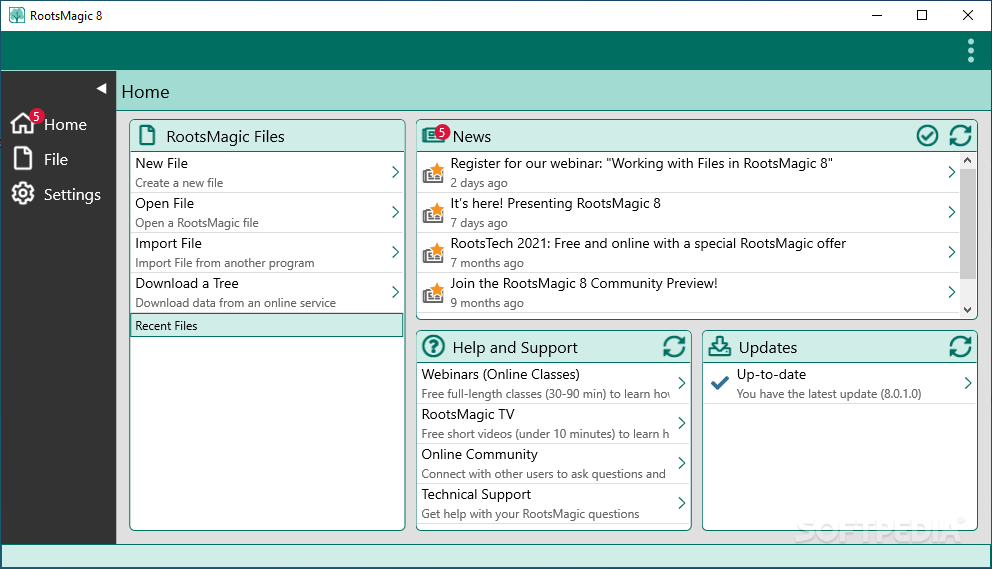

I like using the Family Tree on FamilySearch, Find A Grave, WikiTree and Ancestry trees. It is also important to share our findings with others. It is vital to keep great records, to prove sources and keep records. I would not be able to evaluate new sources of evidence or work that others have done on our family. It gives me a database for all the work I am doing.
#ROOTSMAGIC SOFTWARE#
In this context, printouts from relational databases are not considered "research reports." See QuickLesson 20: Research Reports for Research Success.For me, genealogy software is a must when doing any kind of family history work.

However, the larger research world uses that term "report" more specifically to mean a written account of a specific block of research-one that identifies the research problem, provides the details on which the search is grounded, identifies all sources and methods used in that block of research, provides abstracts or transcriptions of all documents found, analyzes those findings, and reaches conclusions or provides a work list for further research based on new findings. Almost all users of this software find it essential to run "reports" of one type or another, for one reason or another.

Everything you print out is the software's "report" of what you've entered. Your database software (and others of its type) uses the word "report" for whatever type of print-out you want to run from the data you've entered. You specifically mentioned "reports." This word needs clarification. In short, our decision as to the type of citation we create depends upon our purpose and our audience. However, a magazine that produces "light reading"-and traditional encyclopedias that provide overviews of a subject-will typically omit all reference notes and substitute a very short source list as "suggested reading." Well-done, published genealogies also rarely include a back-of-the-book Source List, because a well-researched family will include thousands upon thousands of sources, most of them in manuscript form, as opposed to the "list of books" (bibliographies) one commonly sees in books by other types of historians. In the history field, they are not common for short works because they would repeat (in alphabetical order), the sources already identified in the footnotes.
#ROOTSMAGIC PROFESSIONAL#
Professional researchers (and genealogists who conduct professional-level work on their own families) add source lists to their research reports to provide a quick overview of what has been consulted in that research segment.History researchers use source lists in one of two contexts: By contrast, all the published, peer-reviewed articles I've posted there under the "Articles" tab do use shortened subsequent citations because the publications in which they appeared do follow that practice as a space-saving measure.
#ROOTSMAGIC FULL#
Many of my own research reports at my personal website Historical Pathways do not use shortened citations because online users frequently grab one page that is of interest to them and then would not have the full citations they need to understand or verify the information I've provided. Today, when much work is published electronically, researchers and writers may decide not to use them. "Shortened" citations are traditional in published works, as a space-saving measure. Also, when we gather an image for our research files, the citation we attach to the image will be in full reference note format.īeyond that, when genealogists decide to produce a biographical sketch of a person or an article or a book, footnotes or endnotes will still be the format they use. When we assert a fact-whether in our working database or a piece of writing-we are expected to attach a reference note to that individual assertion, providing evidence for that assertion. You may then decide what is necessary for you.Īlmost all documentation that historical researchers record (including family historians) is done as footnotes or endnotes. With regard to your last question, let's look at those three formats.

For help with that, you need to join a forum that focuses specifically on your software.
#ROOTSMAGIC HOW TO#
What we cannot do is give you advice on how to use this-or-that genealogical software. We'd be delighted to help you with any part of citation or evidence analysis whose coverage in EE (the book) is not clear to you, or on any type of document that EE does not cover.


 0 kommentar(er)
0 kommentar(er)
